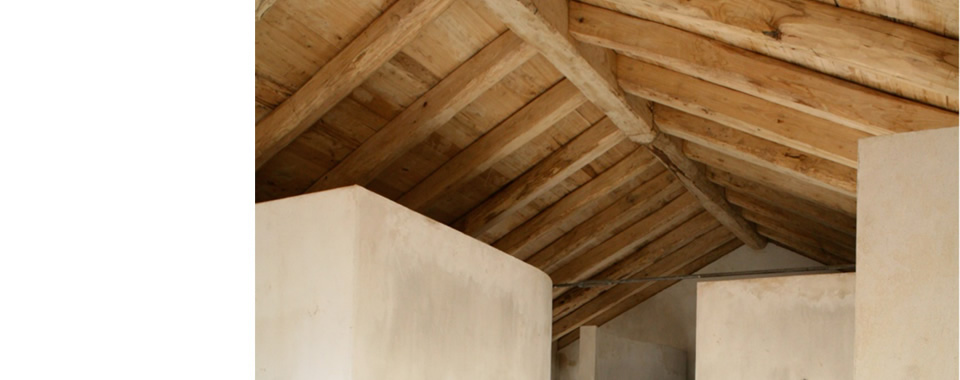

Score - Sustainable Construction in Rural and Fragile Areas for Energy efficiency
Guidelines for Integrated territorial Planning:
Eco-compatible materials
The following guidelines come from a deep analysis of case studies, norms and regulations, in relation to the local level. This analysis is summarized in a card that can be downloaded in Greek.
In our everyday life we come across various, different materials. Metal, plastics, ceramics wood, leather, to name a few, compose the world where we work, live, travel, entertain and interact. In order for these materials to take shape, energy is needed. In fact energy is needed in every stage of the material's life cycle: primary production, product formation, product usage and final disposal or recycling. As a result, every material has an impact on the environment and various tools have been developed over the years to calculate it and help the designer or the mechanic to choose the best materials for every given application e.g. lca, topsis, electre e.t.c. in order to reduce the environmental burden, materials have acquired attractive properties like the abilities to biodegrade, be recycled and reused and new less power consuming techniques for formation and product making have been developed.
The construction industry is a sector that traditionally uses large amounts of building materials: cement bricks, stone, wood etc. For sustainable housing, natural, non-toxic and environmentally friendly materials must be used to reduce the total environmental burden of the building and to create a safe environment for the users of the building. According to bioclimatic normative, while taking into account the cost of a material, in the same time have to consider its environmental cost and then make our choice. Ecological materials might be more expensive but they are less harmful for the people and the environment supporting the norms of sustainable development.
Natural and environmentally friendly material have to be promoted by the state as in many cases their use support local economy and local architectural characteristics, improve the behavior of the building’s envelop and limit the footprint of the constructions. Despite these facts, in some situations it is difficult to find or buy these materials and under some circumstances the use of these materials is not appropriate due to their special characteristics.
Indication for the Bio-construction Action Plan
According to the guidelines mentioned above, are briefly highlighted below criteria for pilot projects to be funded in the territories MED, in relation to the specific subject matter hereof. These criteria, along with those for the other issues highlighted in the array of eco-contruction tools, form the Bio-Action Plan articulated construction for the various partner’s country.
- Support the implementation of a cluster that consists of retailers and distributors of eco-compatible and natural materials which can be used in the construction sector and reduce the environmental impact and the harmful consequences of toxic materials.
- Projects aiming at the creation of a data base containing the different eco-compatible materials and instructions on their application on buildings as well as different traditional environmentally friendly techniques that are applied in several areas.
Possible criteria for MED bio-housing quality certificate
The guide implemented by the Technical Chamber of Greece (TEE) entitled “Bioclimatic Design of Building” mentions in mane sections the need for using special materials non-harmful for the human health and the environment in bioclimatic buildings regarding the exterior, the interior, openings, passive solar systems etc. However, a more detailed presentation of the most appropriate materials would help even more the choice of the most suitable resources.
Case studies
Bioclimatic houses in Kefalonia
